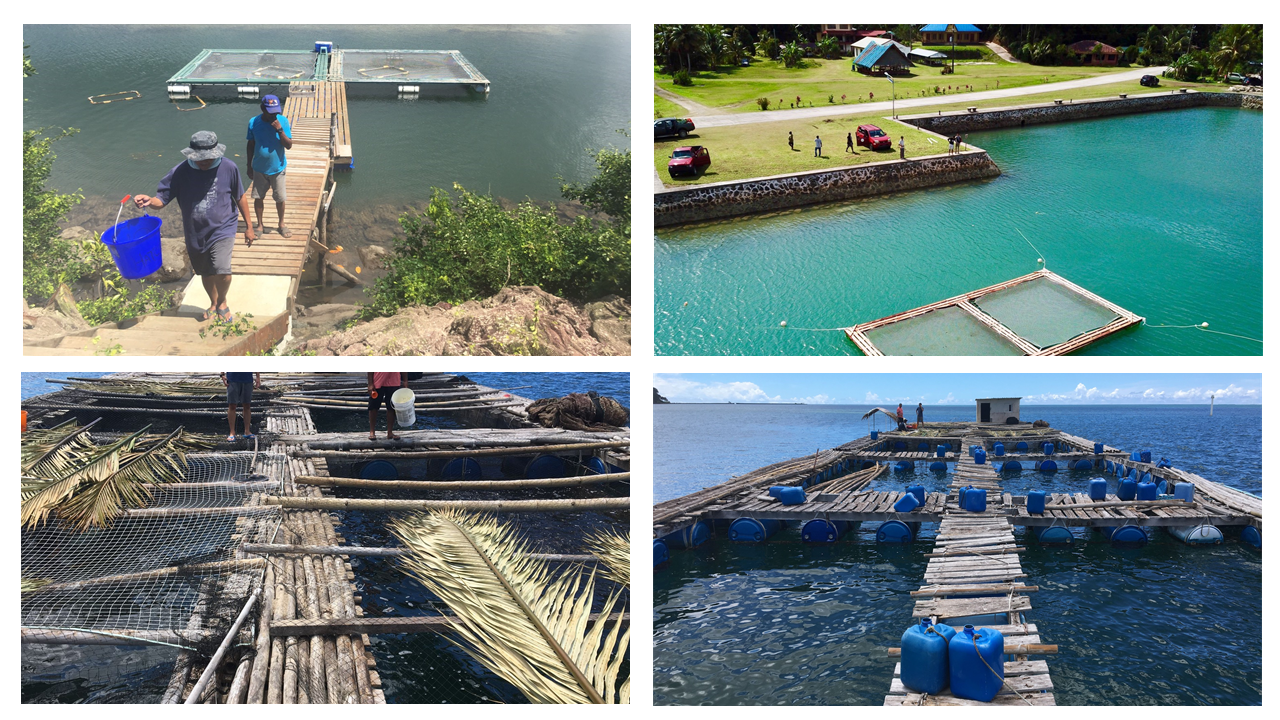Finfish
There are many different types of farming methods used for finfish aquaculture, including land-based recirculation, flow-through tanks, nearshore cages, coastal ponds, and offshore cages. The focus of this section is on cages and pens since this method is often used for finfish aquaculture in reef areas.
Cage Culture Methods
Finfish cage culture can be used for a variety of species and generally has a smaller environmental cost than coastal ponds. Ponds, being on land rather than in a marine environment, directly compete for space and have historically been a driver of negative environmental impacts on sensitive nearshore coastal habitats, such as mangroves and estuaries.
Cage and pen cultures are types of enclosures where the animals being farmed are enclosed in an area by a structure, usually a net or cage. Cages have netting on all sides, in some cases, even the top to prevent predators from entering the cage. Pens can use the seafloor as the bottom of the pen and they only have nets on the sides.
Cages and pens are built from different types of materials. In Asia, small to mid-scale farms have used materials such as bamboo and wood for decades; switching to new materials such as nylon, plastic, polyethylene, and steel mesh, which although have a higher cost, present a much longer life span and allow better water exchange.
In coastal areas the design that is most often utilized is a cage that is constructed with locally sourced materials (wood or bamboo) that floats due to buoyant materials (drums filled with air or styrofoam blocks). A synthetic fiber net is then hung from the wood platform to become the enclosure that holds the fish.

Examples of coastal net pens in Palau. Photos © Julio Camperio and Jack Lin
Cage and net pen shapes are generally square, rectangular, or circular and can be used in relatively shallow or deep environments.

